Review: Canon EOS M
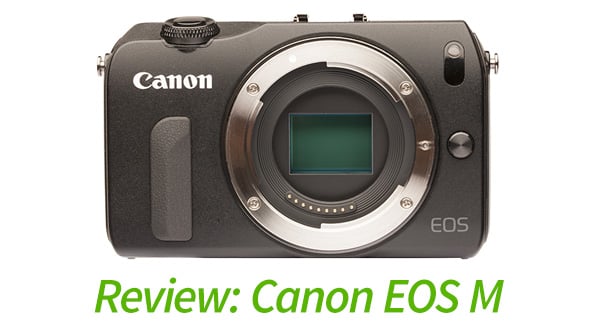
The EOS M is a professional digital camera. It has a reasonably large 17.6 Mp sensor, it features the latest Digix processor, and it can do almost everything a full-scale DSLR can do. In manual exposure mode you can control aperture in tiny increments, and shutter speed as well. There is a bias adjustment, multi-frame shooting setting, and a whole list of “creative” modes for taking photos without the difficulty of knowing the details.
The camera shoots full HD video, and it has two microphones built into the top of the camera, and a mic input on the side. And it features HDMI output.
I took it and my usual collection of lenses to a choral festival in Mission San Luis Obispo. This was just a day after it arrived, and I was using the event to learn how to use this diminutive device. On a tripod with a long lens, the camera performed acceptably. It is very quiet, with just a tiny shutter noise, audible from a foot or two away. The LCD is bright and sharp. Focusing in low light proved to very difficult at first. In auto-focus mode, the latency of the camera was not acceptable* to me, but in manual focus mode the shutter is instantaneous.
The following night I tried using a large magnifier on the LCD to focus. This worked pretty well, but it was awkward, and it slowed me down, so I learned how to get along without that. The camera features a magnified view on the LCD – by touching an icon of the magnifier, then tapping the screen where you want the image magnified, it will enlarge the view 5X and then 10X for critical focus. After a bit of experimentation I decided that I like this feature.
As with anything really new, Canon is moving their camera interface to the LCD screen, with fewer mechanical points of contact. I like most of the features of the EOS M, especially its quiet shutter, and its ability to use all the Canon lenses. I have also discovered that the low-light capabilities of this camera exceed those of my more “professional” camera. The improvement is a combination of a newer sensor and an improved internal processor that minimizes sensor noise. I have been shooting at ISO 3200 and 6400, with excellent results.
Recently I shot with the new Canon 400mm f2.8 Mark II lens in Mi
ssion San Luis Obispo. I’m sure it looked incongruous to have an eight-ounce camera mounted on an eight-pound lens. But, it’s a pro camera, and I got some gorgeous photos of the musicians. And, for once my shutter was not be the loudest sound in the room.
There are some things I would ask Canon to change, were they listening. One is that the only way to control this camera remotely is with an infrared remote (sold separately); that device only works from 15 feet away. I like to mount remote cameras to shoot these concerts from overhead, from the director’s podium, etc. I use Pocket Wizard transceivers to do this, and these will not work on the EOS M. It would be easy enough to make an infrared LED dongle to hang on the end of a Pocket Wizard, but I would rather that Canon provide a plug like they do with their other cameras. If this is going to be marketed as a pro camera, then it should have pro features; the infrared remote is not adequate.
*I was frustrated by the slow autofocus, so I looked it up on Google, and learned that Canon had improved the camera with a firmware upgrade. I installed that and the camera’s autofocus functions improved tremendously. Latency is still an issue, but it’s very short now.
Images

This image was taken from about 100 feet distance. The detail shows how sharp the lens it, and how well the little Canon camera captured it.
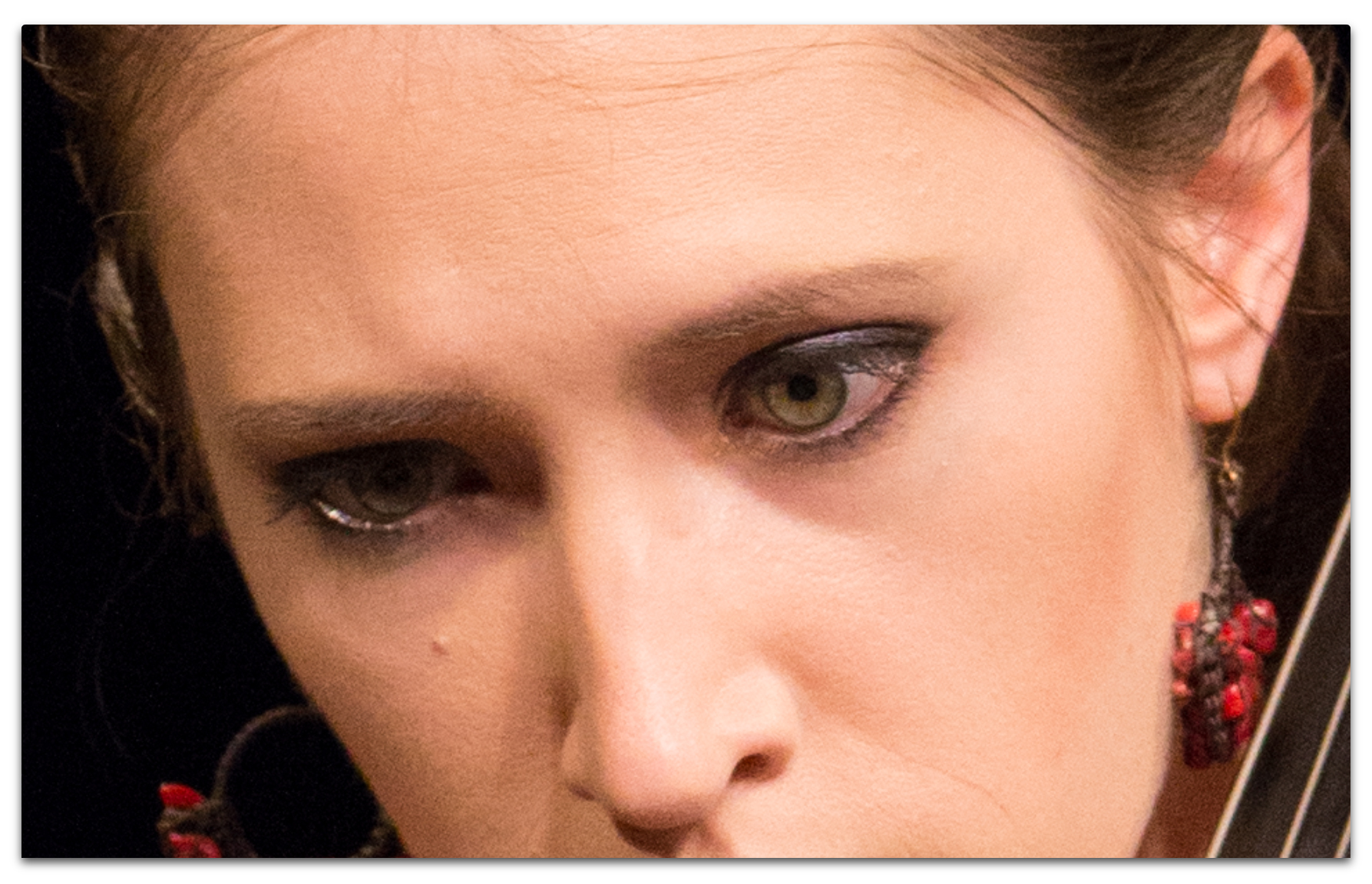

At 620mm, this is a pretty tough shot to get with any camera in low light. With the ISO set to 3200, I was able to capture the photo and get an excellent result. The Canon EOS M camera is fast enough to capture movement in an image without too much noise in the image.

This image was taken with a Canon 100-400 mm zoom lens and a 2X telextender. The focal length was 550 mm. Aperture: f11 at 1/60 sec. Under theatrical lighting I can shoot like this because there is an adequate amount of light on the players. The ISO was 3200, necessary with such a long lens and the telextender.
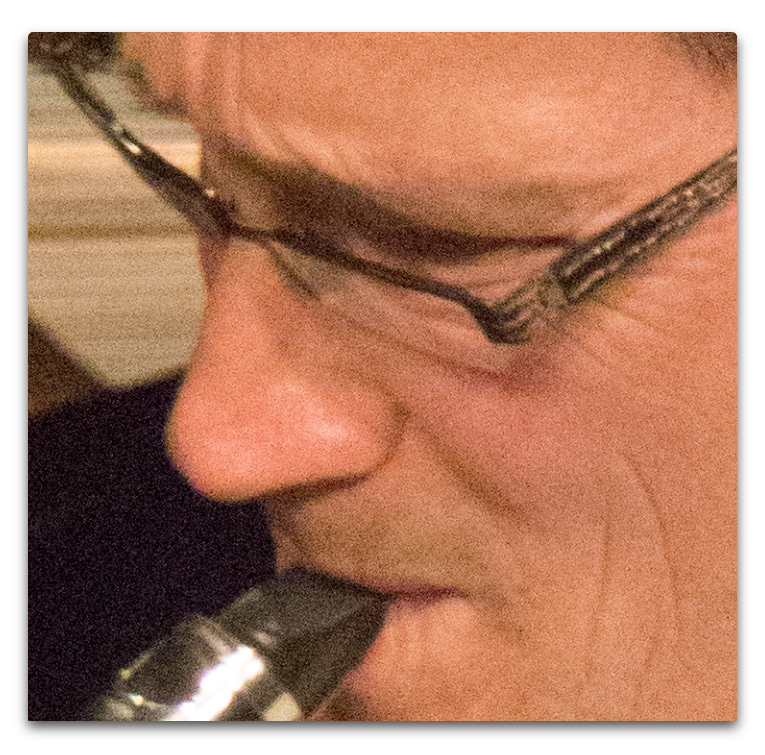
This is a close-up of the same photo, enlarged enough to show the sensor noise, which I think is very manageable. If it takes a six-diameter enlargement to see this noise, it’s not a problem for commercial photography.
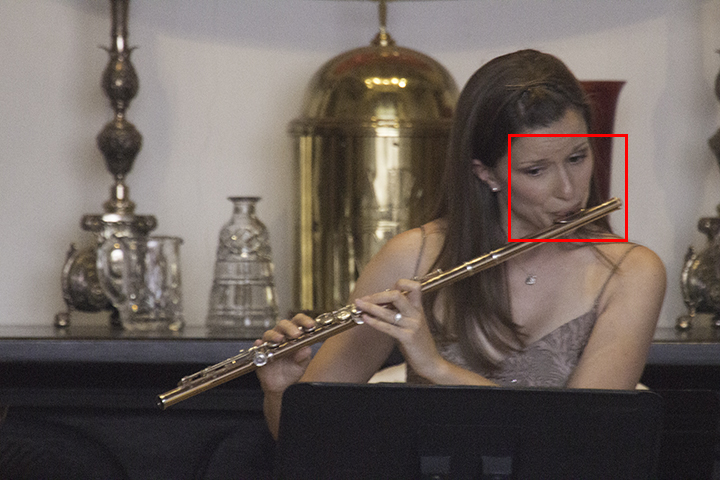
This photo was taken at a chapel near Shandon, California, at night under incandescent lighting. I was shooting from the very back of the audience with a 100-400 mm zoom lens and a 2X telextender. The focal length was 800 mm. ISO was set to 6400.
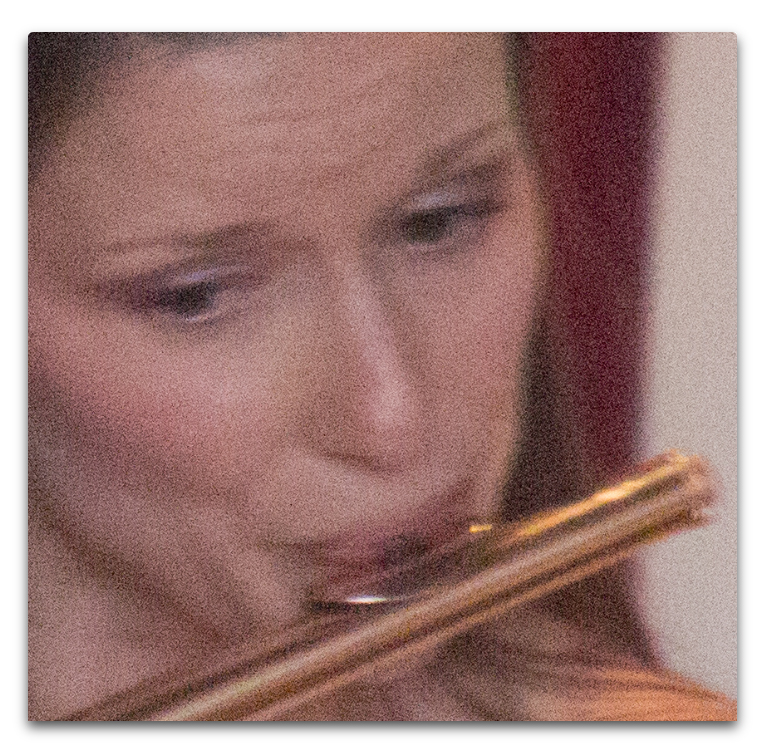
In this enlargement of the flutist, you can see the noise from the sensor at ISO 6400. As with the photo of the sax player, I find this amount of noise to be acceptable under these circumstances.
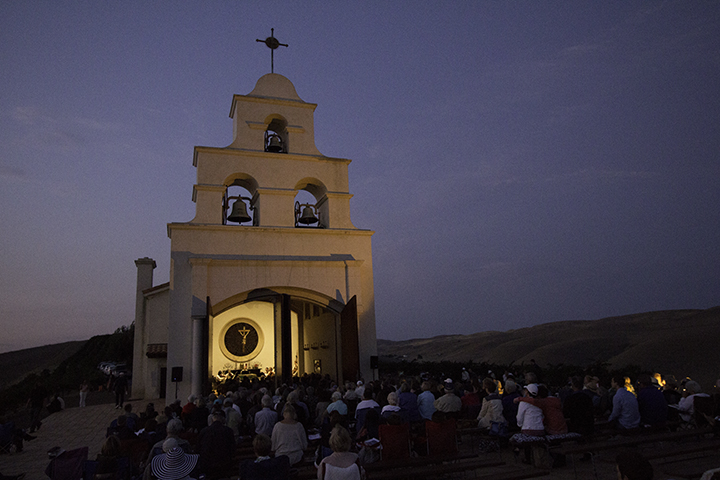
After sunset I took a number of images of the chapel with light coming from within. This was hand-held, f4.5, 1/30 sec. with a Canon 10-22mm wide angle zoom lens. The effect is nice, and the photo has commercial viability.
This article was last modified on August 5, 2013
This article was first published on August 5, 2013




